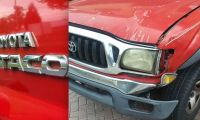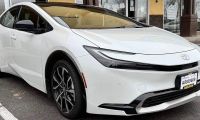The California State Legislature has extended the life-time of green and white HOV stickers for plug-in hybrids and electric cars. The stickers allow a solo driver to use the high-occupancy vehicle lane, if they are driving a clean air vehicle. The stickers are a big incentive to drive sales of EV's and PHEV's just as the gold HOV stickers drove sales of hybrid vehicles a decade ago.
Originally the HOV lane was to serve two purposes: Reduce traffic congestion by encouraging more carpooling; reduce air pollution by encouraging more carpooling. By reducing the number of vehicles on the road there is more space on the road, which would reduce traffic congestion.
In the late 90's, the HOV stickers were first developed to encourage sales of the mandate era electric cars, as well the hybrid cars. The color of the stickers, green, white or gold, vary on the drive train in the car. The gold stickers, now expired, were for hybrid cars and played a big role in the popularity of hybrid cars. The green stickers are for the plug-in hybrids, and it was the Chevy Volt which qualified for the green sticker that first propelled Volt sales ahead of the Nissan Leaf. The white stickers are for electric cars.
Electric or plug-in hybrid cars do reduce air pollution.
The green and white stickers were to expire on Jan 1, 2015. There are no limit on the total number of white stickers, and as of May 31, 2013, 27,780 had been issued. The green HOV stickers came into existence in 2010, and they are limited to 40,000 total stickers. As of May 31, 2013, 14,525 have been issued.
With AB266 the green and white HOV stickers will expire on Jan 1, 2019. The law includes a few other provisions, one of which adds definitions that will qualify the BMW i3 with range extender for the green HOV stickers.
On Tuesday, AB266 was passed in the California Senate, while it passed the Assembly in May 2013. There is one more procedural vote required in the Assembly before the bill is sent to Gov. Brown for his signature.
"California has always been leading the way when it comes to lowering our carbon footprint. These standards entice Californians to utilize the most environmentally friendly vehicles," said Assm. Richard Bloom, D-Santa Monica.











